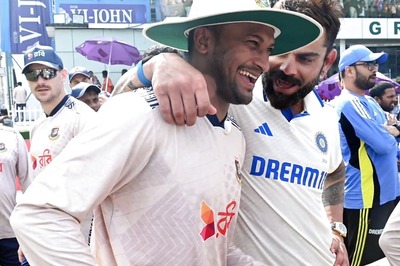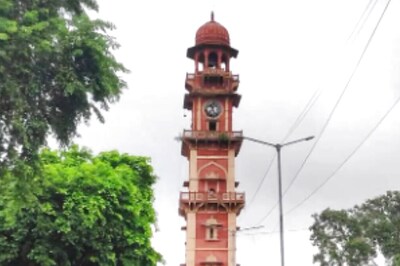
views
New York: YouTube has been very good to bedroom singers, who have found a quick path to fame, and major labels, which have benefited from some of the largest digital audiences for their top music videos. But the middle tier - hundreds of independent labels and their deep rosters of bands - has sometimes been marginalised in YouTube's endlessly expansive video jukebox.
Now, as YouTube continues to expand as a music destination, it's making itself more welcoming to independent labels and musicians. On Monday, YouTube unveiled a new feature called the Merch Store that allows users to purchase fan merchandise directly on an artist's YouTube channel. On Wednesday, YouTube will announce a long-awaited deal with global rights agency Merlin, which represents some 14,000 independent labels.
Those announcements follow deals with indie labels such as the Beggars Group (whose roster includes Vampire Weekend), Merge Records (whose acts include Arcade Fire) and a settlement earlier this year with the National Music Publishers' Association on royalties for music publishers. In August, YouTube relaunched its music page, adding local concert listings, curated playlists and a kind of digital Billboard list: the YouTube Top 100.
For the Google Inc.-owned YouTube, it's part of a long-term push to build its music section into a more robust consumer experience while also making more money for labels, big and small - and YouTube, too, of course. "We see YouTube as a comprehensive entertainment destination and music is a core component of that," says Chris Maxcy, YouTube partner development director for music, games and platforms. "My charter is to make sure we have as comprehensive a catalog as possible of all the professionally produced video out there."
Until recently, that catalog was mostly driven by major labels. Though the majors (Sony Music, EMI Group, Warner Music Group, Universal Music Group) were skittish about YouTube in its early days and rights squabbles were common, they have all come to profit considerably from the video site. YouTube declined to give specific numbers, but said the music industry as a whole is making "hundreds of millions of dollars annually from having their content on YouTube" and that music ad revenue on YouTube for the major record labels has more than doubled year after year.
That has made YouTube an important digital realm for independent labels, too, for a percentage of advertising revenue, and now, opportunities for merchandise and ticket sales. "Those labels and the artists they represent now have a powerful monetisation opportunity on what has become pretty clearly a significant music destination on the Web," says Charles Caldas, CEO of Merlin.
The arrival of YouTube was part of the reason Merlin was founded. The agency - which considers itself the "fifth major" - began in 2008 as a centralised hub, gathering smaller labels to make digital deals with music services like MySpace, Spotify and Rdio. This enabled smaller labels to get a piece of revenue from official music videos and user-generated content, as well as protection from piracy.
It's not a small part of the business. Merlin's combined market share in the US is around 10 per cent. Independent music is one of the few growing sectors of the music industry, and statistics from Nielsen have shown that independents are even more powerful in digital music than in physical sales. But the indies have sometimes had to play catch-up.
"It was a situation which the major labels turned to their advantage early on," says Caldas. "The time on that has passed now. There's nothing really we can do now about what happened six years ago, unfortunately." Maxcy says YouTube's efforts to work closely with the independents will continue to grow, and that the relationship is now "picking up steam." Chris Larosa, music product manager at YouTube, says its yearlong effort to connect consumers with independent music will continue: "There's definitely more we want to do."
In the meantime, YouTube is churning out new bands. One of its stars is the Northern California indie duo Pomplamoose, which has a full-fledged digital identity thanks to YouTube. The duo's "videosongs" - simple clips of the pair, Jack Conte and Nataly Dawn, performing their songs, with many split screens showing each instrumentation - have racked up more than 65 million views. Their YouTube channel pages also now offer for sale downloads, T-shirts, concert tickets and even official Pomplamoose grapefruit soap.



















Comments
0 comment